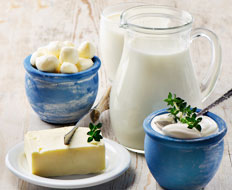It was probably inevitable. From Brooklyn to the Bay Area in the past 10 years, we’ve seen hipsters in handlebar mustaches and thick-framed eyeglasses capitalize on consumers’ boundless interest in all kinds of niche foods and beverages—many marketed by the modern-day equivalent of what used to be called “mom ’n’ pop” operations. The only difference today is that mom has a degree in comparative literature from Vassar and pop is modeling seasonal demand trends using the predictive analytics model he developed while working on his doctorate in computer science.
I haven’t an inkling of how we ever did without small-batch gins, bitters, ciders, and bourbons; artisanal breads, jams, sausages, sweet rolls, and honeys; handcrafted cakes, cookies, and confections; or grass-fed beef and free-range chickens raised on non-GMO, gluten-free, antibiotic-free, grain-free, and hormone-free diets. But today, these types of specialty items are grabbing substantial market share and shelf space away from giant, multinational consumer packaged goods companies. Indeed, last year, Fortune reported a Credit Suisse finding that since 2009, the top 25 U.S. food and beverage companies have lost an equivalent of $18 billion in market share.
So, really: How could we not have foreseen the rise of the microdairy?
The clear answer is that in the not-too-distant past, many of us had as few as two or three brands of milk, butter, yogurt, or cheese available to us at our local big-chain grocery stores. Offhand, I don’t remember anyone complaining about that limited selection. But then, if the past 20 years have taught us anything, it’s that consumers often don’t sense they’re missing out until other, better options become available.
Enter the microdairy. Earlier this year, The New York Times noted that the Chicago-based dairy 1871 is supplying grass-fed cow milk to many of that city’s most celebrated restaurants, while New York City distributor Manhattan Milk delivers glass bottles of grass-fed, organic milk from dairies in the region to area residents’ doorsteps.
“Restaurant menus cite the provenance of their dairy products in the same way they boast of grass-fed rib-eyes and hydroponic tomatoes,” the Times noted. “And consumers are willing to spend more for boutique milk at farmers’ markets and upscale grocers.”
It isn’t just the small-batch processing that’s intriguing here. In many microdairies, milk is also pasteurized at lower temperatures, which results in the retention of certain healthful enzymes and produces superior flavor.
How do we in the fast-food and fast-casual spaces exploit this trend? I would suggest it’s possible that, given the high level of interest Millennials and Gen-Z consumers are showing in their foods’ provenance, it may be possible for chains to incorporate certain locally sourced microdairy products—including yogurt, cheese, milk, and ice cream—into their menus as a means of developing a farm-to-table connection with consumers who may fall outside their typical target demographic.
While the microdairy trend is still nascent, there are other dynamics reshaping the traditional dairy landscape that warrant our attention. One is consumers’ fading fear of fat. A recent spate of reports, including one published in the journal Circulation, have suggested possible health benefits associated with eschewing skim or low-fat milk in favor of whole milk. In that study, individuals whose blood samples contained high-dairy fatty acid levels had a lower incidence of diabetes, and those with low levels had a higher incidence.
The combination of reputed health benefits and the generally superior taste and mouthfeel of full-fat dairy products has led to something of a resurgence in the category. This, in turn, opens doors to the possibility of more succulent butters, yogurts, and desserts that suddenly don’t seem quite as overtly decadent as they might have 10 years ago. Operators might consider using full-fat yogurt as a base for creamy parfaits, savory meat marinades, or even as a condiment for sandwiches, tacos, or salads.
Then, of course, there are increasingly varied and popular non-dairy alternatives, from nut milks, coconut milk, and soy milk to vegan cheeses. Given widespread interest in meat and milk substitutes that offer environmental, animal-welfare, and (possibly) nutritional benefits, it’s a small wonder that this class of functional alternatives has caught on in a big way. The reality is that consumers avoiding dairy don’t necessarily want to avoid indulgence, and certain alternative milks can be excellent bases for treats such as cheesecake, custard, ice cream, frozen yogurts, and other post-meal delicacies. Providing them with sweets made from alternative milks may provide an avenue for boosting check averages.
The bottom line for quick-serve operators and other chains is that each of the three major trends noted above offers the possibility of a new platform—or several—for exploration and further research. I encourage you to explore the options and to share them with me at marc@qsrmagazine.com.
This story originally appeared in QSR‘s August 2016 issue with the title “Milking It.”










